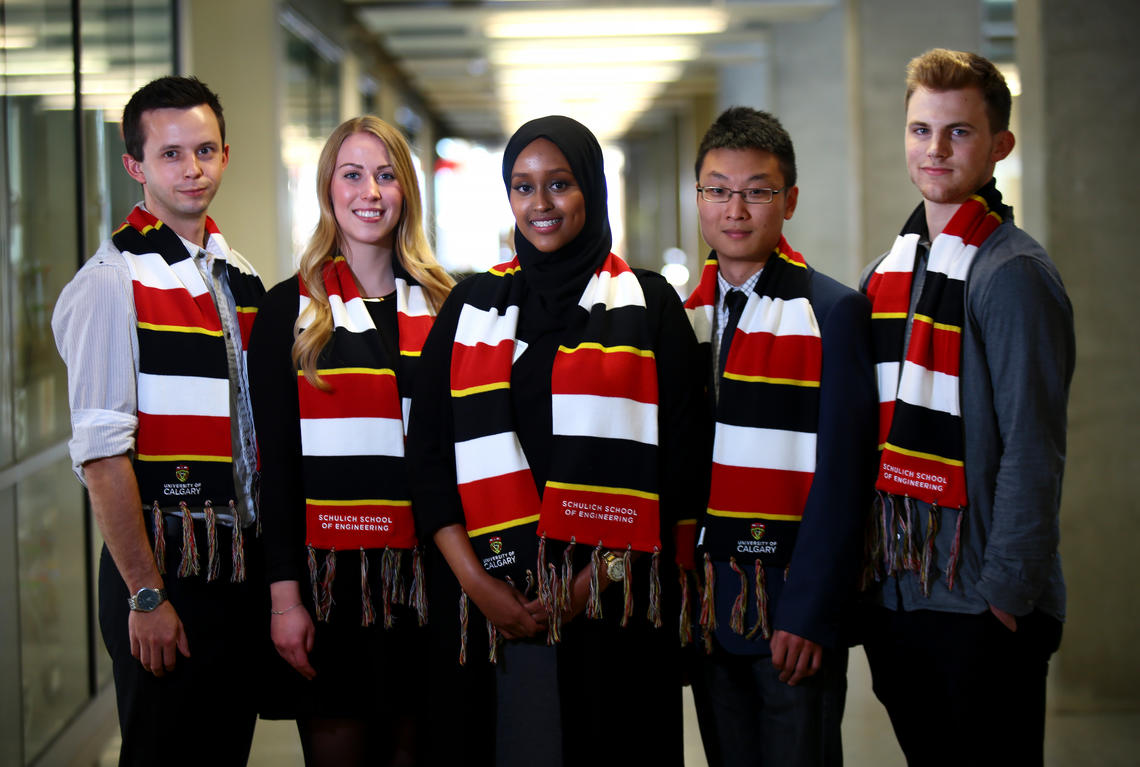Nov. 4, 2016
Energy Engineering program prepares to graduate first class

Students with approved polytechnic diplomas continue their education towards a degree at Schulich.
Colleen De Neve for the University of Calgary
When Denis Chorney finished his engineering technology diploma at SAIT, he searched for a way to continue his education and earn his engineering degree. It was the mid-70s, and his only choice was to head to the United States — a difficult and costly endeavour for the would-be engineer.
For decades, Alberta students with polytechnic diplomas have faced this same dilemma. They could move away for specialized engineering bridging programs or start their studies over again as a first-year engineering student at a local university.
That changed in the spring of 2015, when the University of Calgary’s Schulich School of Engineering launched its Energy Engineering program. Created in collaboration with SAIT, the new program helps students with approved engineering technology diplomas complete their engineering degree in as little as two years.
“It’s very, very gratifying to see this is happening, a made-in-Alberta collaboration between two post-secondary institutions that have come together to provide this opportunity to students,” says Chorney, who is now vice-chairman of Teine Energy.
Olivia Petrus is one of the first Energy Engineering students. She enjoys the small class sizes and the opportunity to interact with her professors, as well as the chance to complete a one-year paid internship with the Schulich School of Engineering.
Praise for internship program
“My internship has been challenging and rewarding. I am constantly given difficult engineering tasks and the ability to prove my competence in the workplace,” said Petrus, whose internship is with Crescent Point Energy. “I strongly recommend all Energy Engineering students apply to the internship program. It’s the best way to learn about the industry and gain valuable experience.”
Earlier this fall, students and industry leaders gathered to celebrate the new Energy Engineering program, whose first class graduates this spring.
Neil Smith, chief operating officer for Crescent Point Energy, calls the Energy Engineering program a key example of how Alberta is a leader in new ways of education. “The combination of having the practical part of the technologists and the theory of engineering, I think that’s going to make the best engineers in the industry,” Smith says.
“It really is the best of both worlds,” adds Thane Russell, vice-president, Business Development and Technology of Absolute Completion Technologies. “Many new engineers have a theoretical background, but it can be hard to find students with practical experience. This program bridges that.”
Scholarships critical to success of this program
Energy Engineering is a rigorous 24-month program. Students go directly from a polytechnic into an intensive spring and summer of studies at the University of Calgary to prepare them to enter third-year engineering. This need to go from one classroom to the next without time off for a summer job makes scholarships critical to the success of Energy Engineering students, says Dean Bill Rosehart.
“My personal goal at the Schulich School of Engineering is to provide an entrance scholarship to every Energy Engineering student. These scholarships will be significant in ensuring all qualified students have a chance to continue their education,” says Rosehart.
Zaynab Elmi is finishing up her final year of Energy Engineering. A recent graduate of NAIT’s chemical engineering technology diploma, she wanted to continue her studies and earn her degree to give her more career options. She agrees with Dean Rosehart that scholarships are what make this program possible for many students.
“It’s really important. Most of us take out student loans and it is essential to have scholarships to make it possible for us to focus on our studies,” says Elmi.
To help support Energy Engineering student scholarships, please contact Ainsley Grant.
